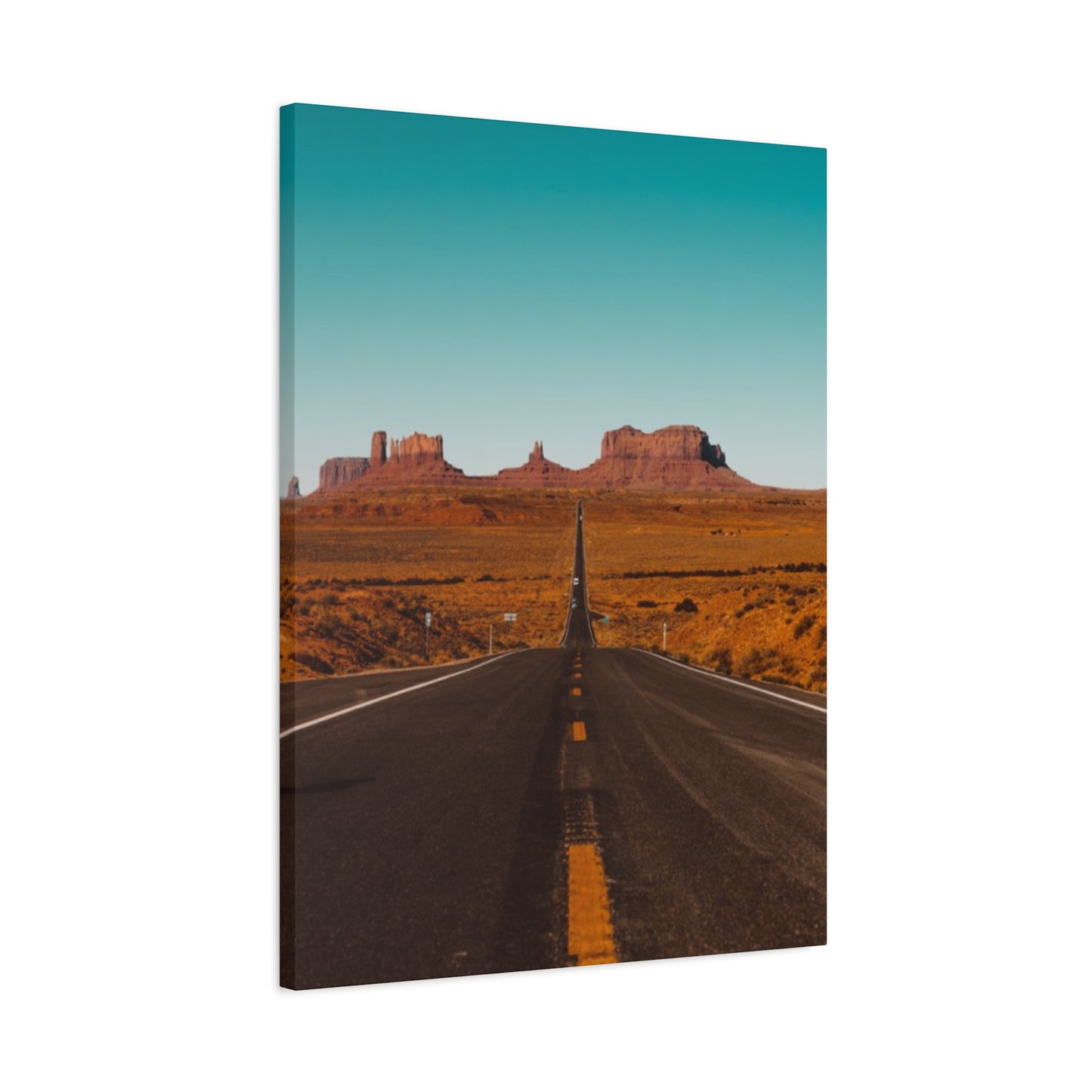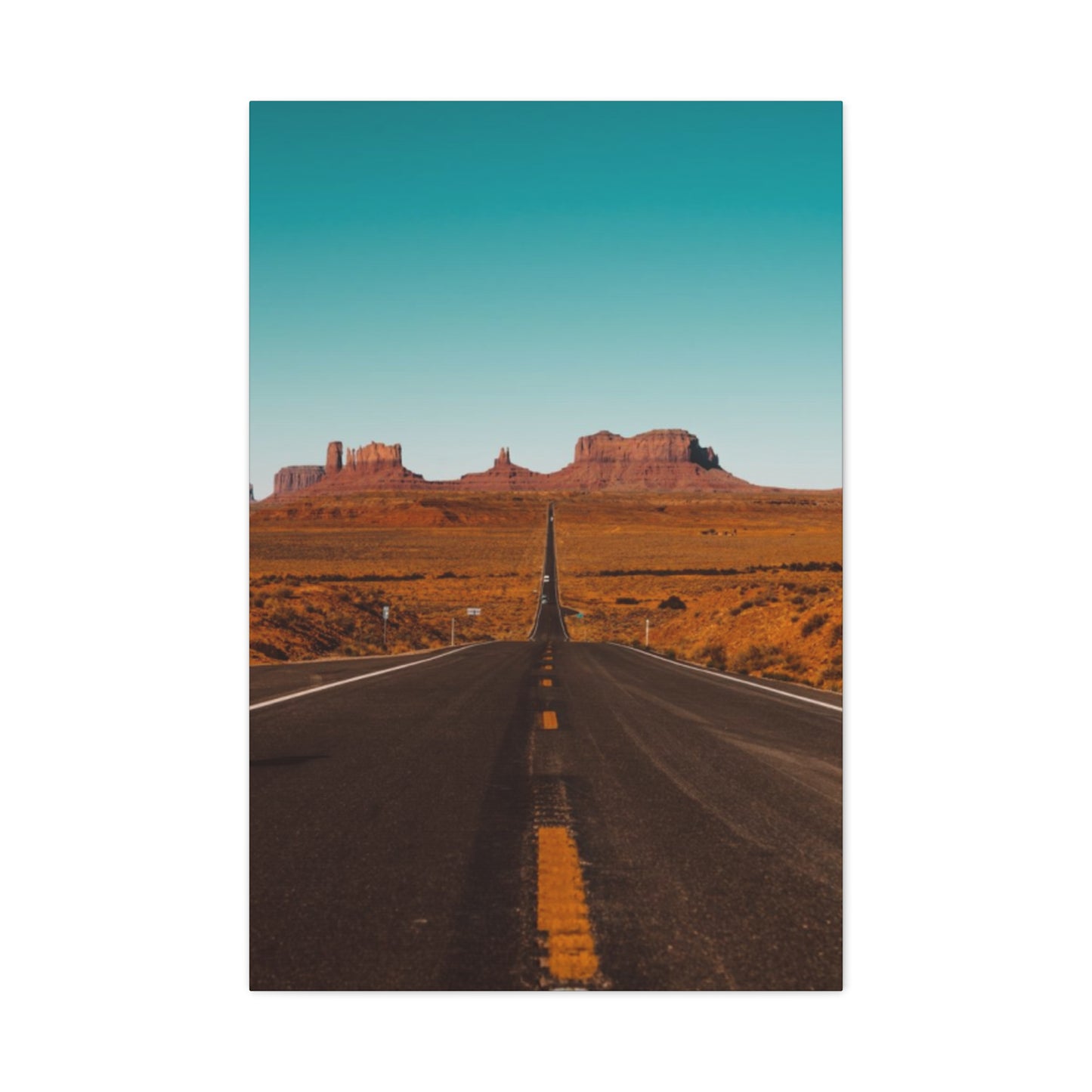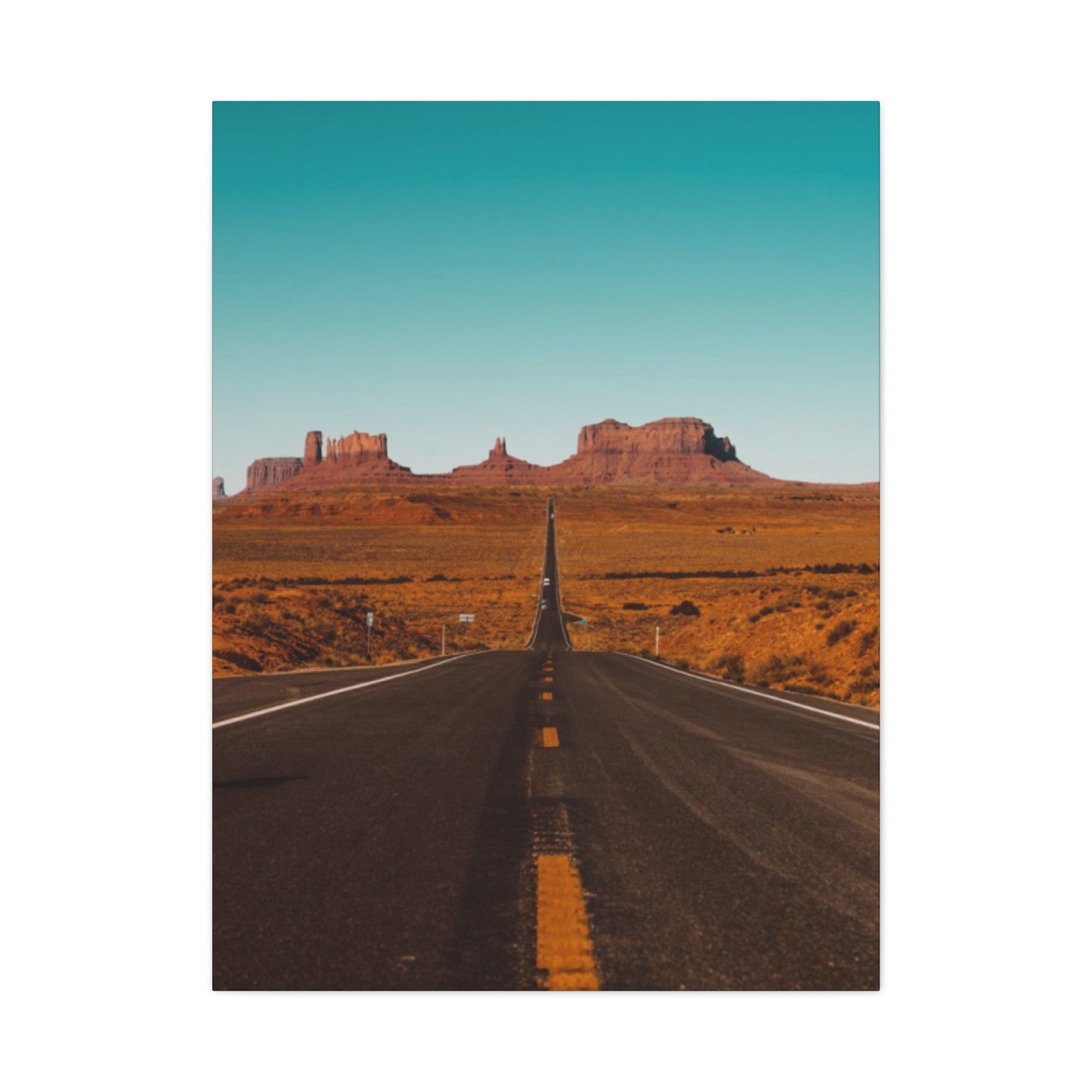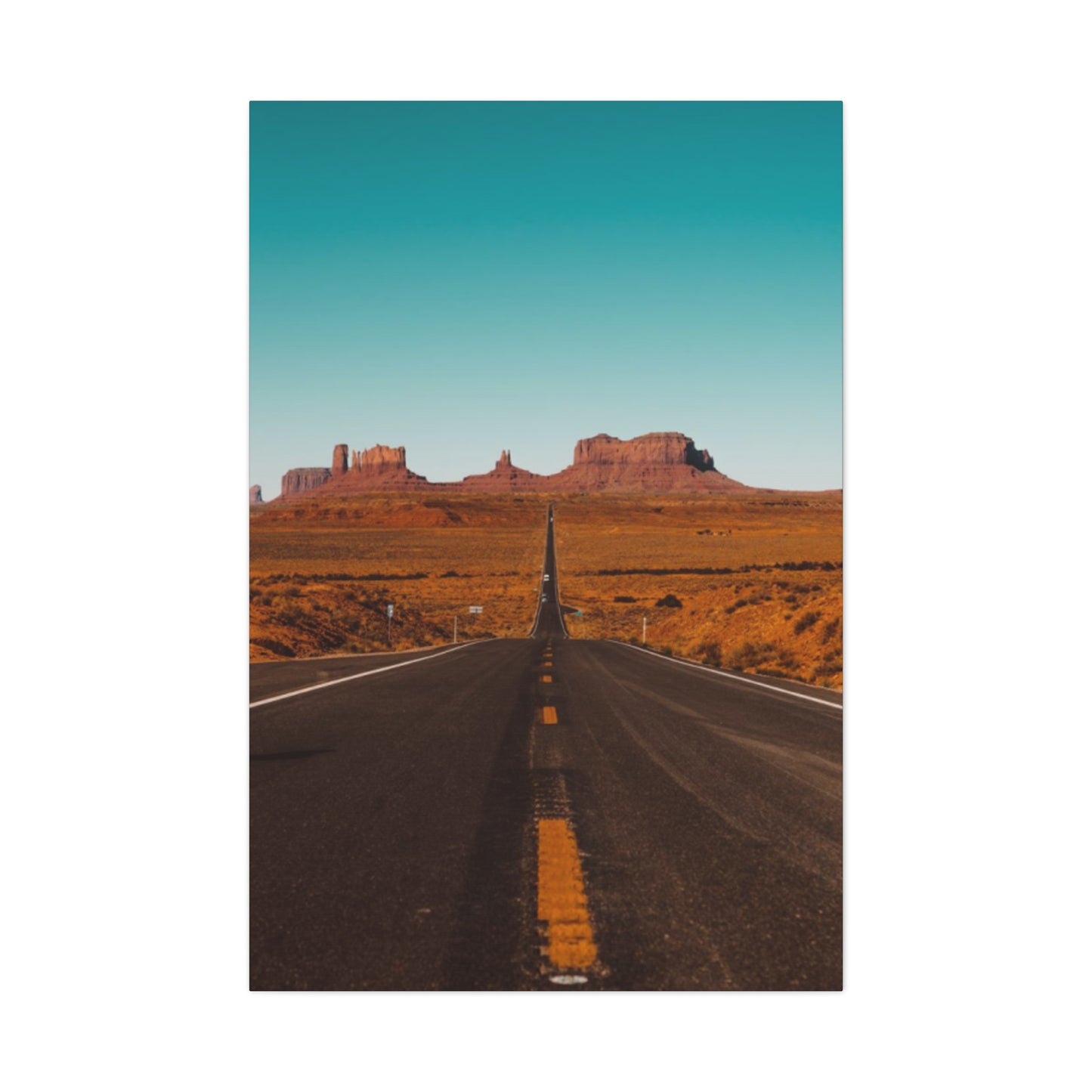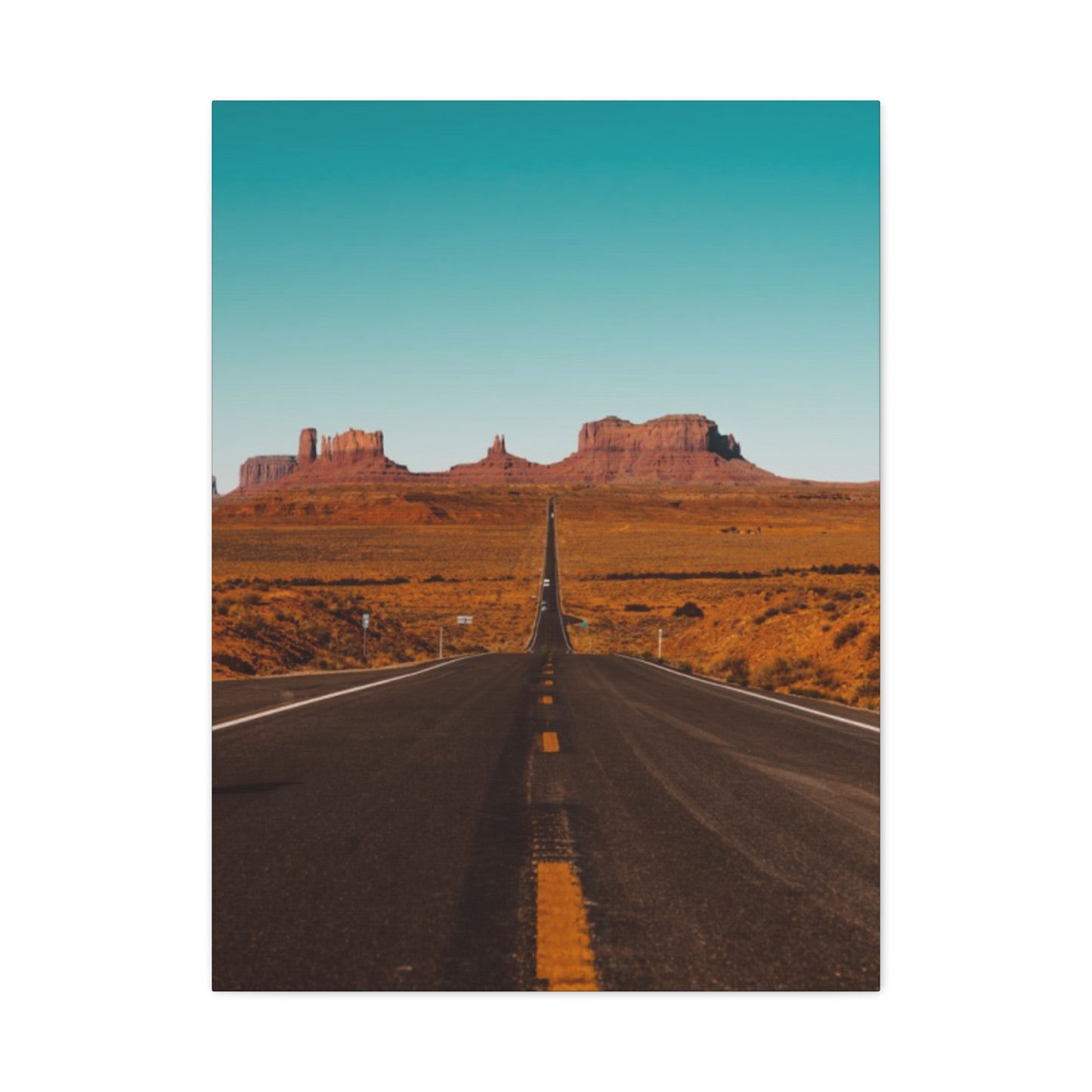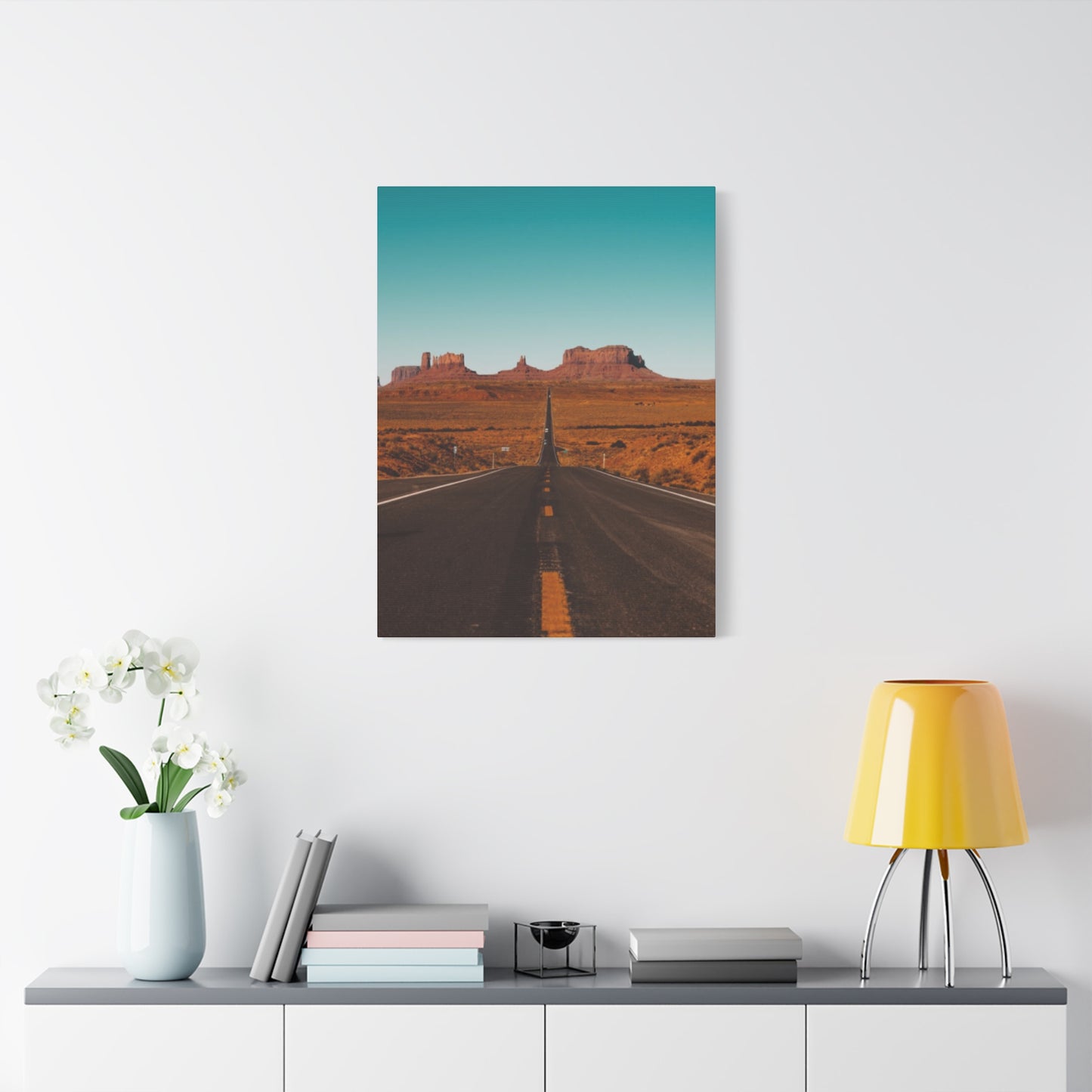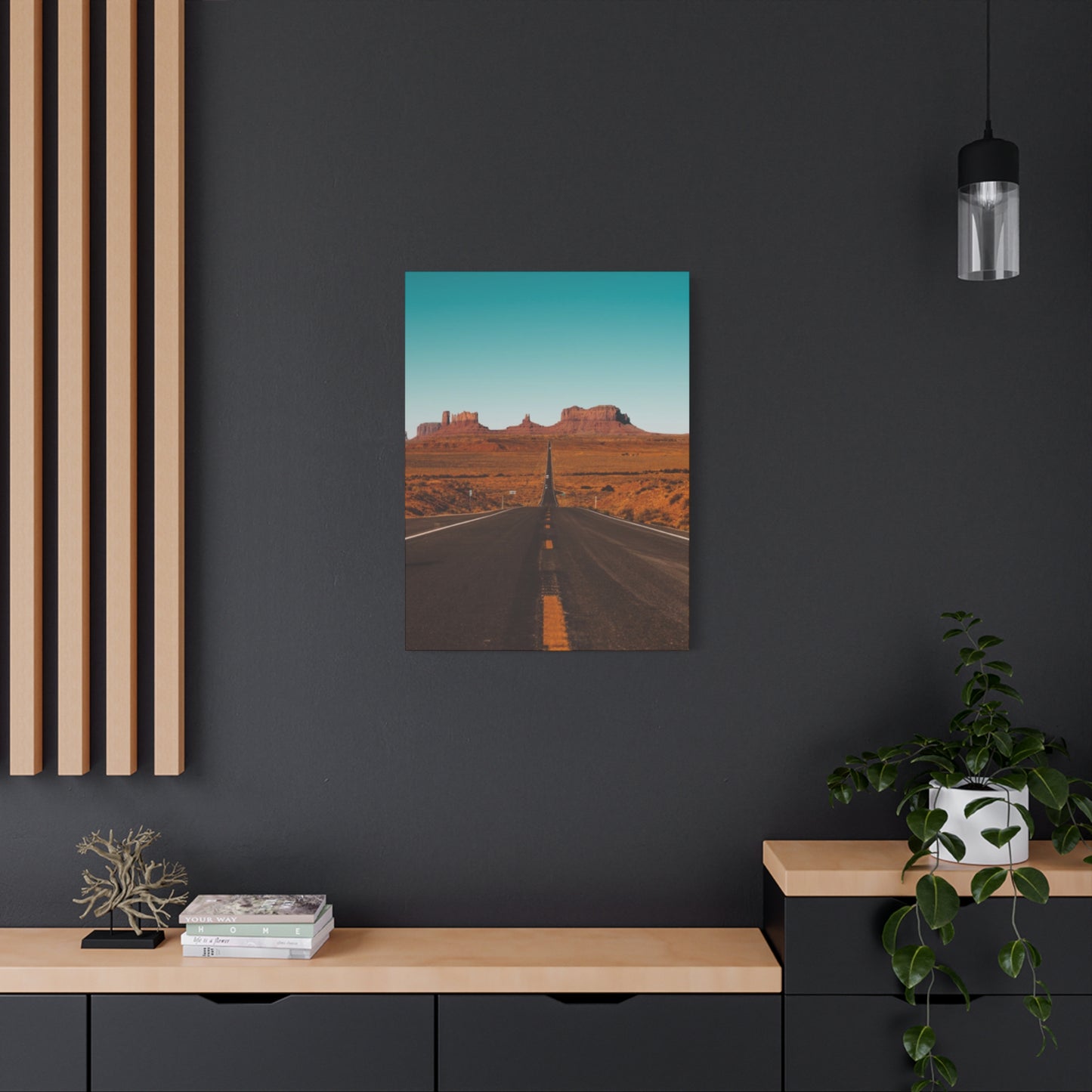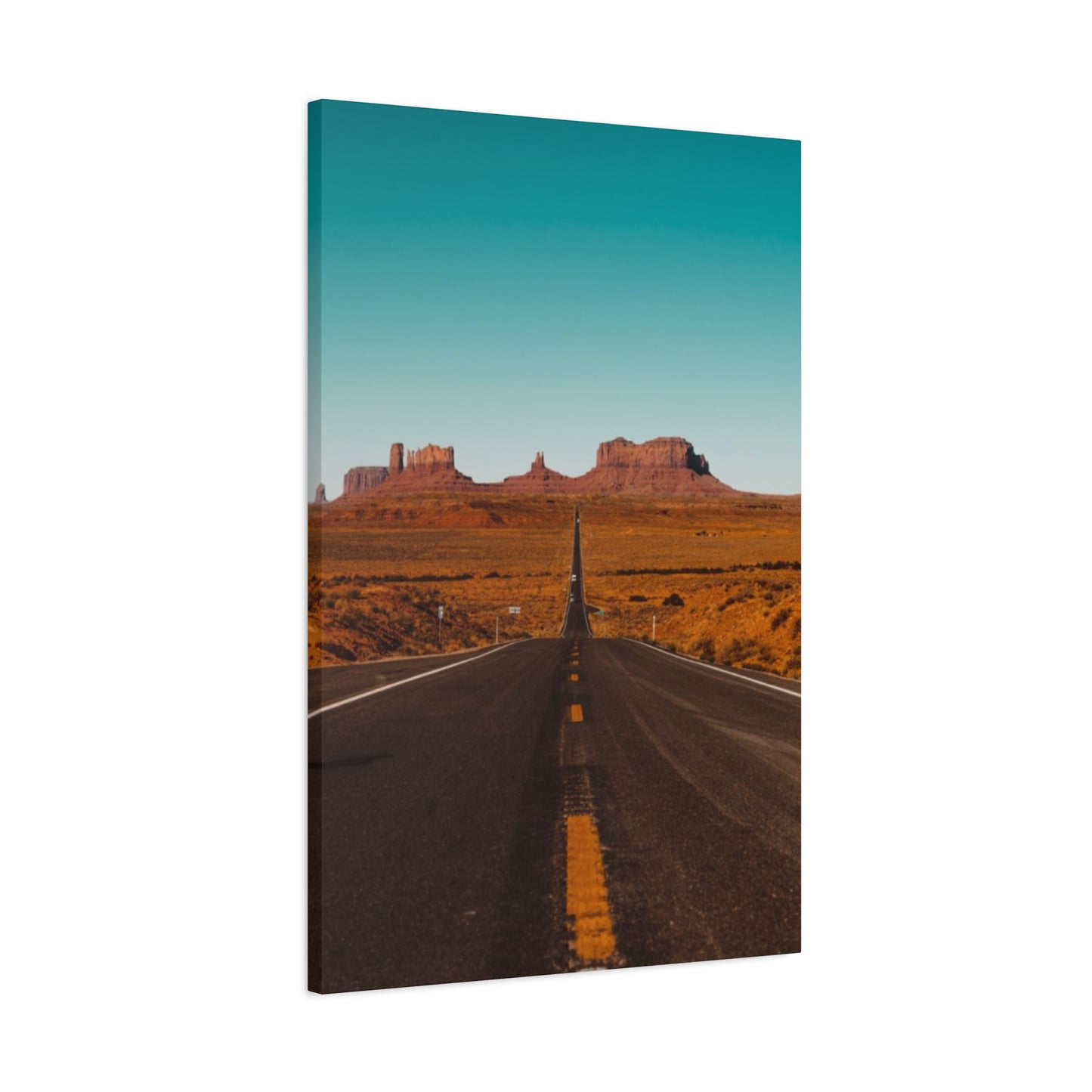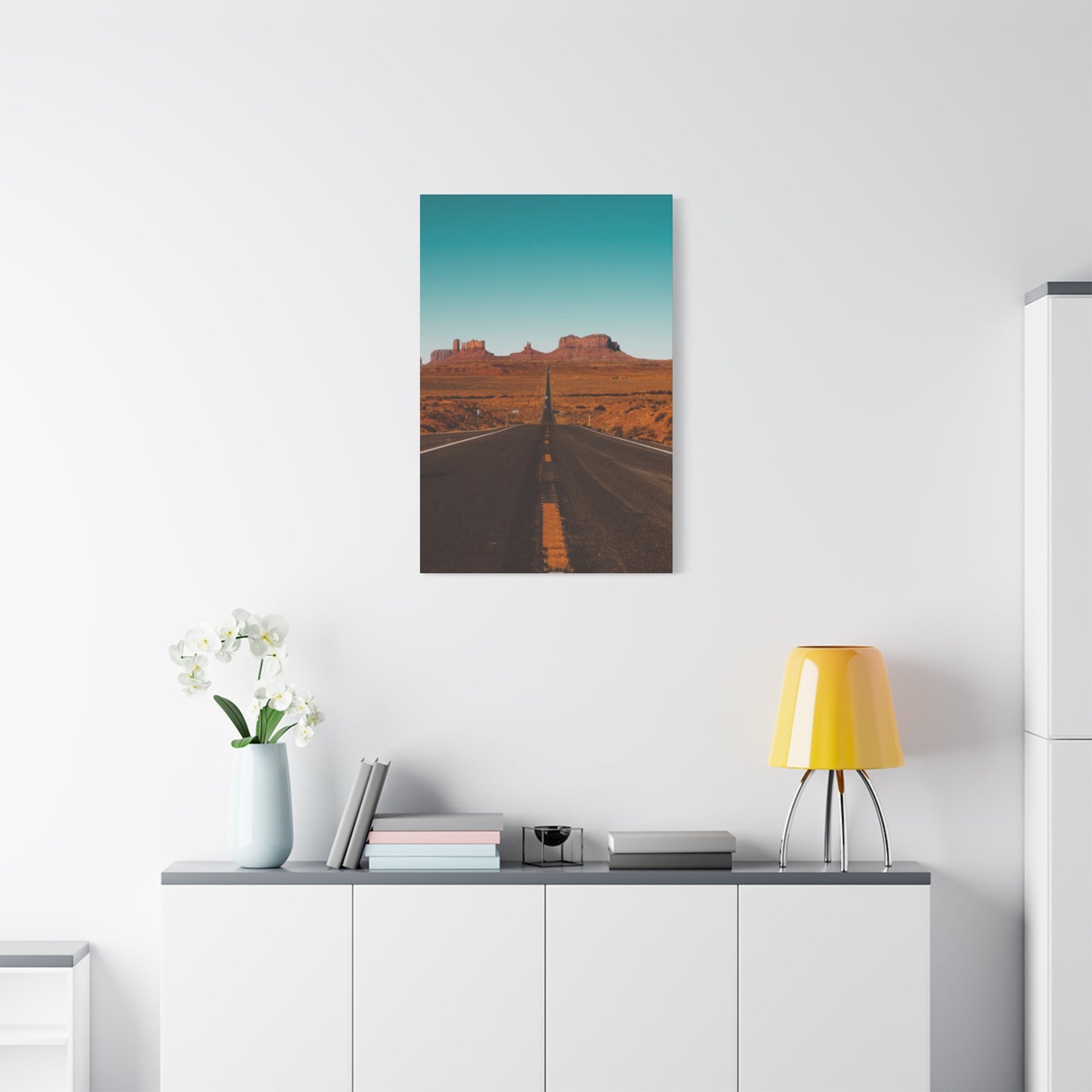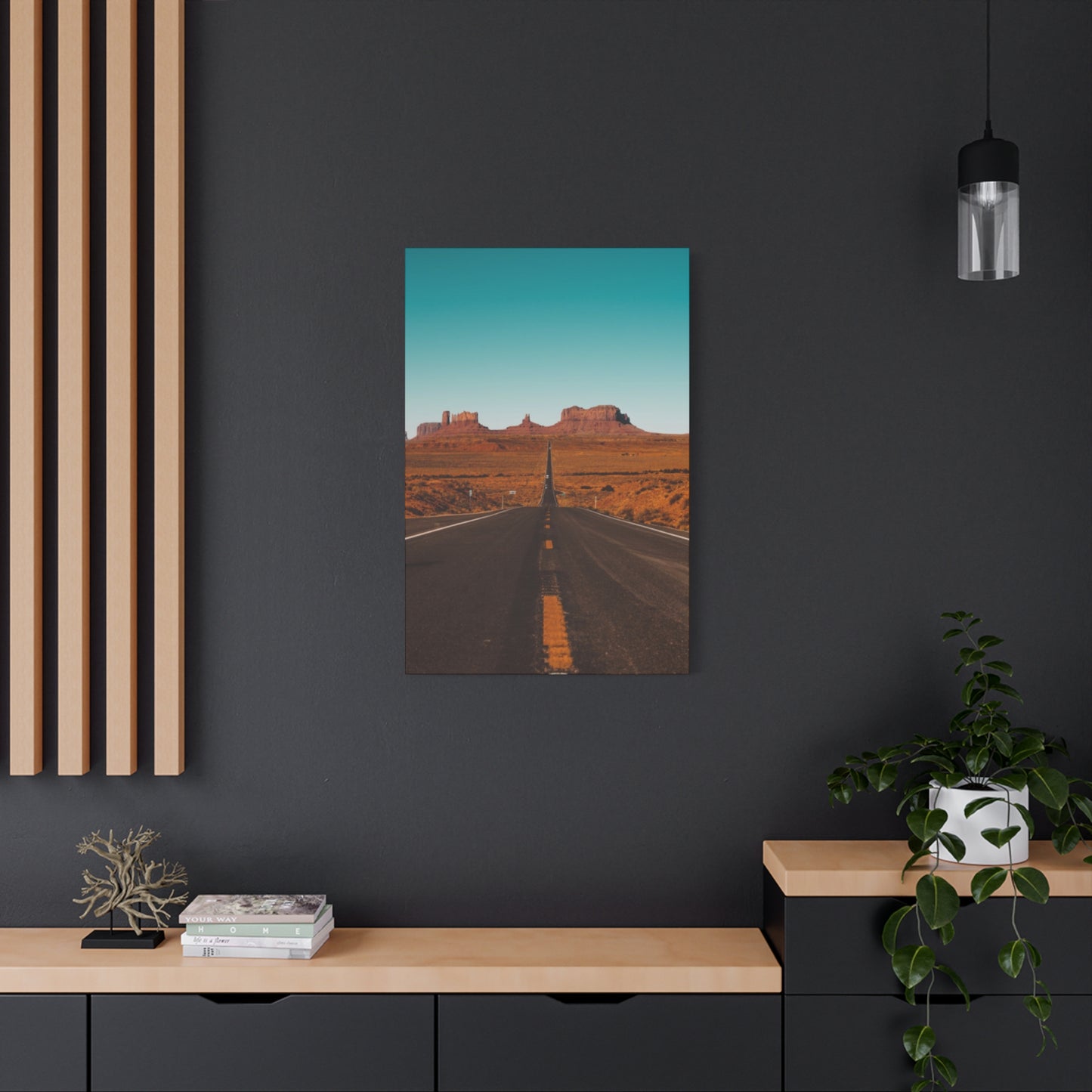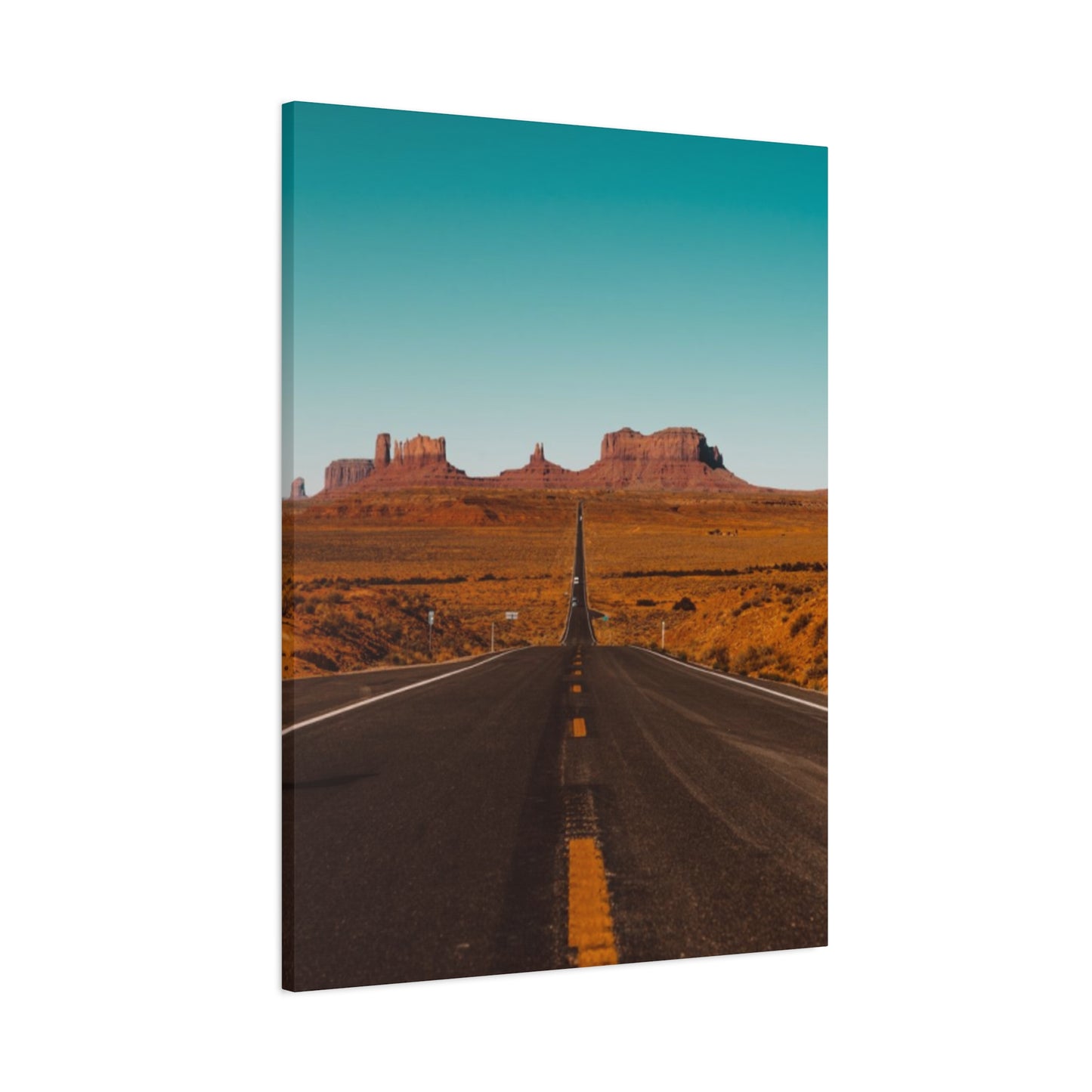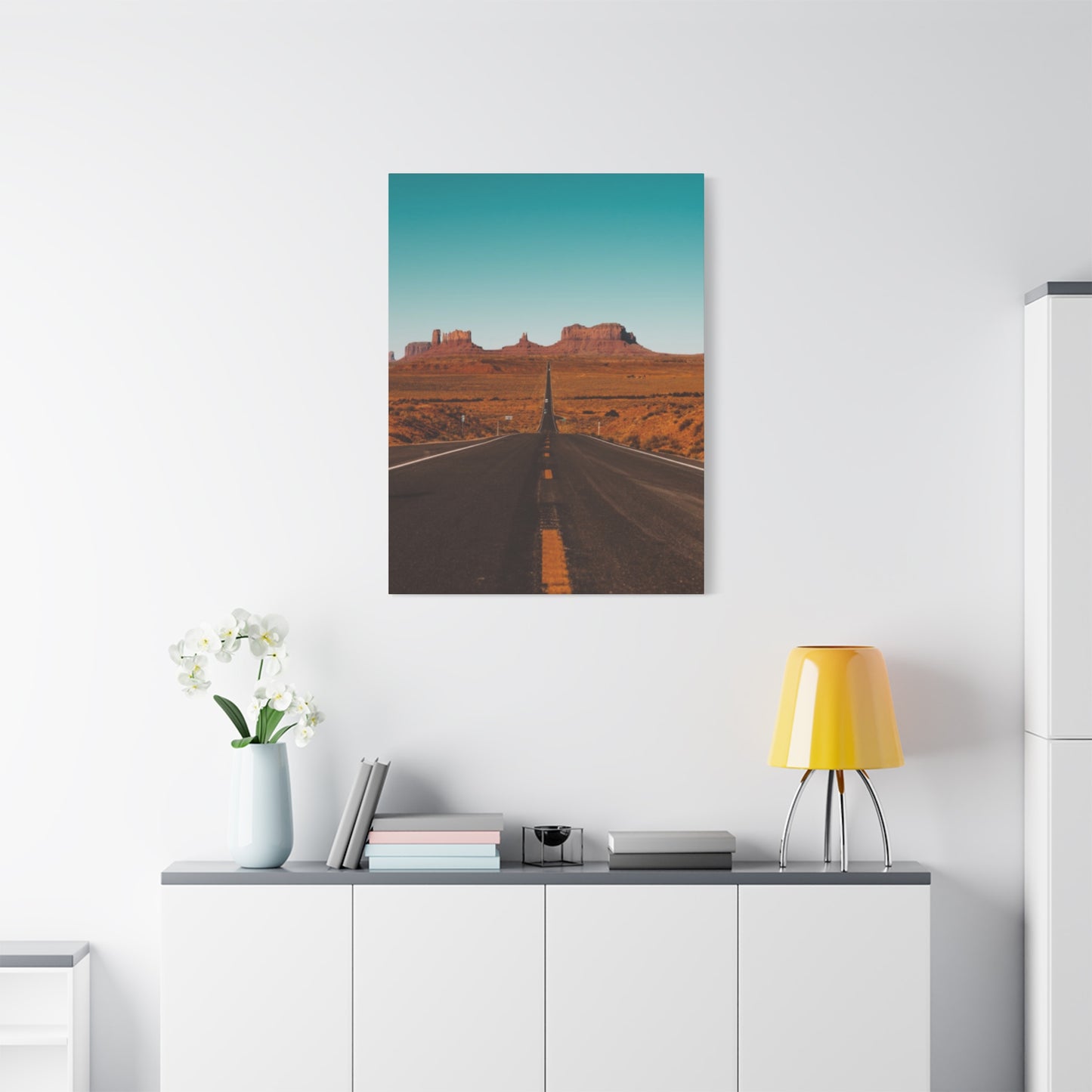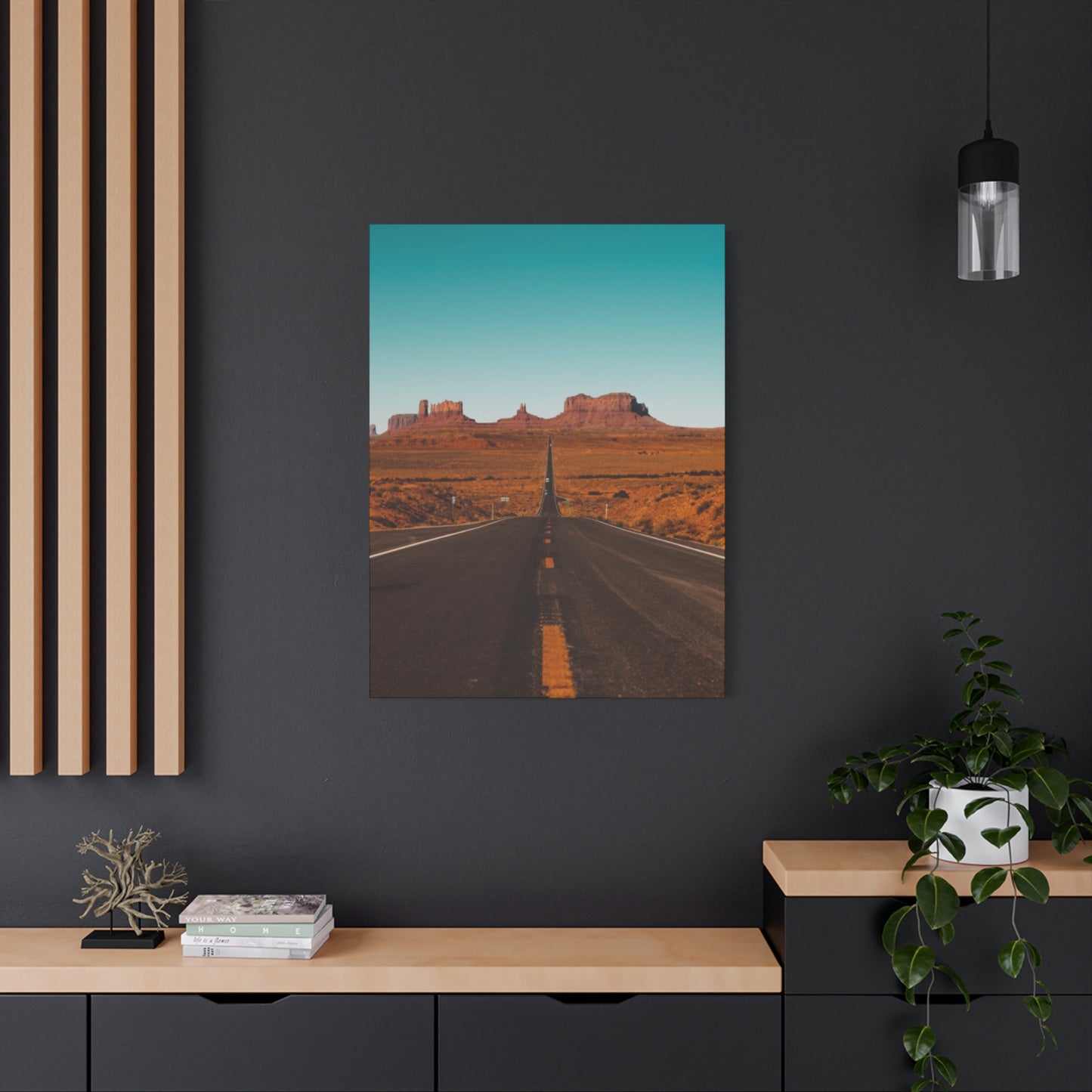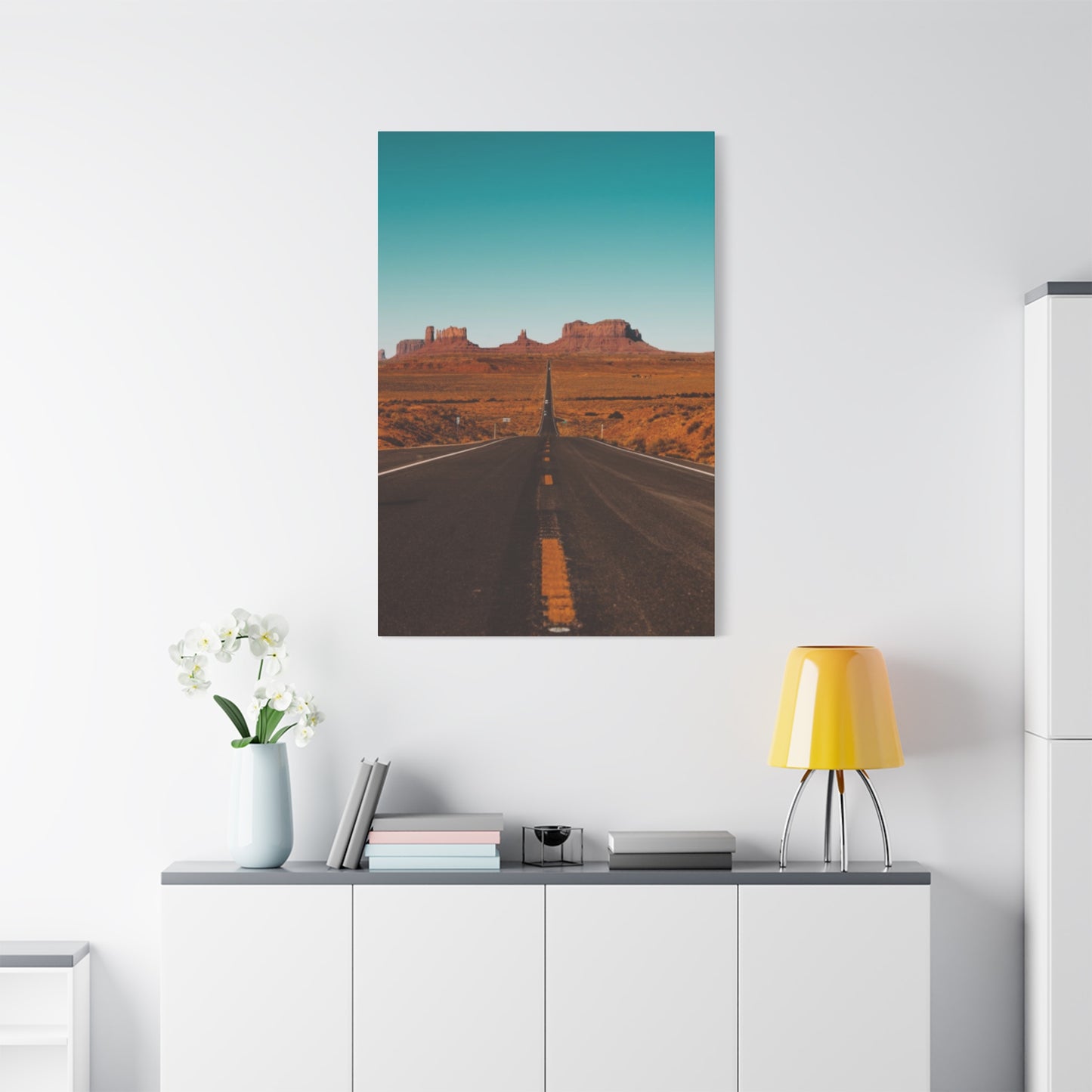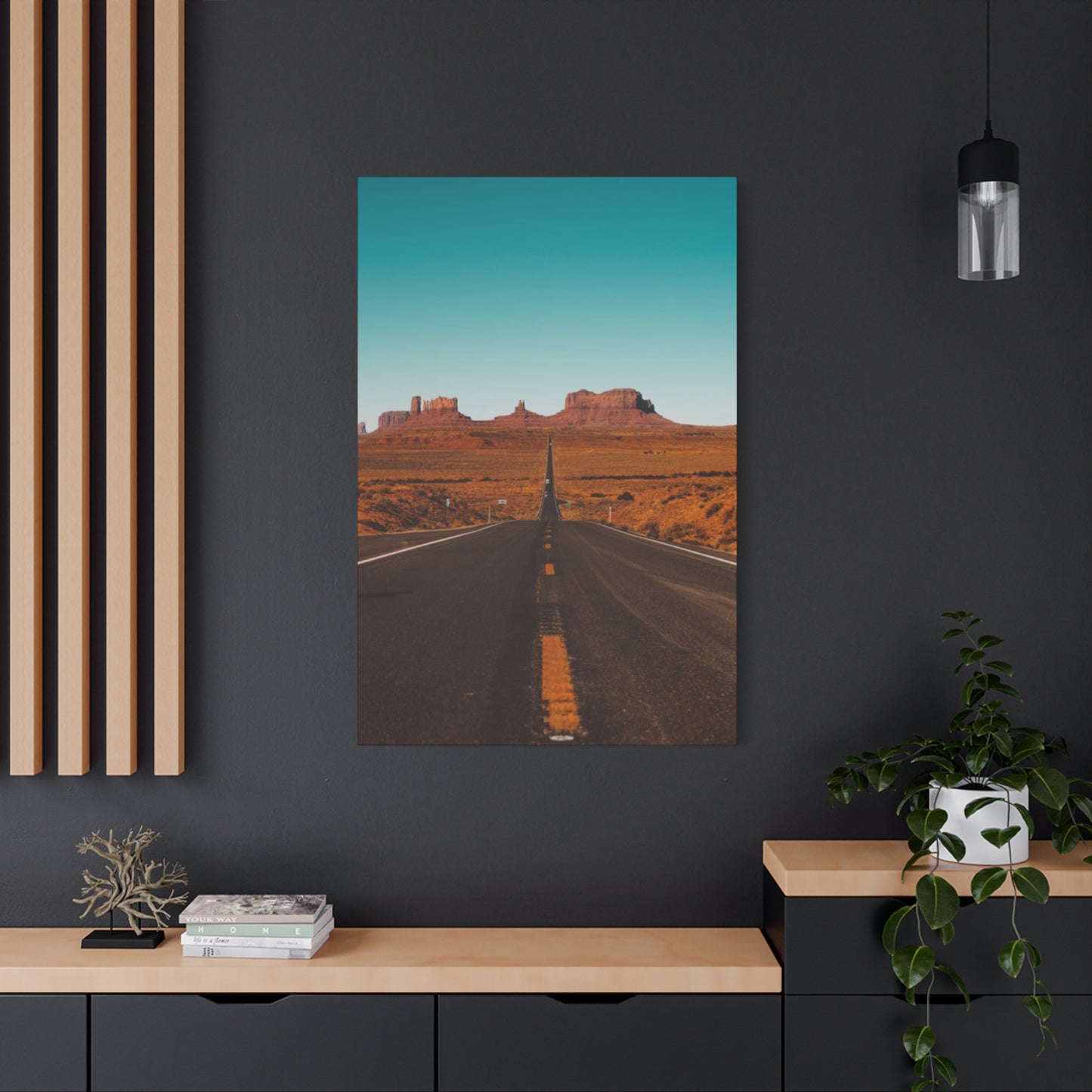Peaceful Pathways: Scenic Road to National Park Wall Art
The allure of winding pathways leading into America's most treasured landscapes has captivated artists and adventure seekers for generations. These scenic routes, carved through pristine wilderness areas, represent more than mere transportation corridors—they symbolize the human desire to explore, discover, and connect with nature's grandest displays. When these magnificent thoroughfares are transformed into artistic expressions, they create powerful visual narratives that bring the spirit of adventure directly into our homes.
The relationship between these scenic byways and artistic interpretation runs deeper than surface aesthetics. Each curve, each vista, each moment where asphalt meets untamed wilderness tells a story of human ambition harmoniously coexisting with natural splendor. Artists who choose to capture these scenes understand that they are documenting more than landscapes; they are preserving the essence of exploration itself.
The Inspirational Power Behind Scenic Route Artwork
The magnetic pull that draws artists to depict these winding pathways through protected wilderness areas stems from multiple profound sources. These routes represent humanity's careful balance between progress and preservation, offering viewers a glimpse into how we can traverse nature without destroying its inherent beauty.
The emotional resonance of these thoroughfares lies in their ability to evoke wanderlust and contemplation simultaneously. When an artist captures that perfect moment where a ribbon of road disappears into a mountain pass or curves around a pristine lake, they are documenting the precise instant where anticipation meets fulfillment. Viewers of such artwork often experience an immediate psychological transport, finding themselves mentally traveling down these paths toward unknown adventures.
The psychological impact of journey-themed artwork extends beyond simple appreciation of natural beauty. These pieces serve as constant reminders of life's possibilities, encouraging viewers to embrace their own exploratory spirits. The presence of a pathway in an image suggests forward movement, progress, and the promise of discovery. When combined with the majesty of protected wilderness landscapes, these artistic interpretations become powerful motivational tools.
The technical challenges involved in capturing these scenes also contribute to their artistic appeal. The interplay of light and shadow across varied terrain, the perspective shifts created by winding roads, and the need to balance human-made elements with natural beauty all require considerable skill and vision. Artists who successfully navigate these challenges create works that resonate with viewers on multiple levels.
Furthermore, these artistic interpretations serve as historical documents, preserving moments in time when specific routes appeared exactly as captured. As seasons change and years pass, these artistic records become invaluable glimpses into the enduring beauty of America's protected landscapes and the routes that provide access to them.
Celebrated Protected Areas in Scenic Route Artwork
Yellowstone's Grand Loop Road has inspired countless artistic interpretations, with its dramatic geothermal features and diverse wildlife creating ever-changing canvases for creative expression. Artists are particularly drawn to the sections where this historic byway winds through the Lamar Valley, often called America's Serengeti, where bison herds create living sculptures against the backdrop of rolling hills and distant peaks.
The Going-to-the-Sun Road in Glacier National Park presents artists with one of the most challenging and rewarding subjects in North American scenic route art. The engineering marvel that carved this pathway through the Continental Divide offers perspectives that seem almost impossible, with narrow ledges providing breathtaking views of pristine alpine lakes and towering peaks. Artists who tackle this subject must master the art of depicting extreme vertical perspectives while maintaining the sense of accessibility that the road provides.
Yosemite's Tioga Pass Road attracts artists interested in capturing the dramatic transition between the park's famous valley floor and its high country wilderness. The route's seasonal accessibility adds another layer of artistic interest, as creators must decide whether to depict the road in its snow-free summer glory or to imagine its winter slumber beneath layers of pristine snow.
The Blue Ridge Parkway, stretching through both Shenandoah and Great Smoky Mountains parks, offers artists an entirely different set of challenges and opportunities. The gentler curves and rolling terrain provide a more contemplative subject matter, often depicted during the spectacular autumn displays when the surrounding forests explode in colors that challenge even the most skilled artist's ability to capture their intensity.
Acadia's Park Loop Road presents unique coastal perspectives rarely found in other scenic route artwork. Artists working with this subject matter must master the interplay between land and sea, capturing how the carefully engineered roadway provides access to some of the most dramatic coastal scenery on the Atlantic seaboard. The changing light conditions created by the marine environment add complexity and beauty to artistic interpretations.
The scenic drive through Arches National Park offers artists the opportunity to explore the relationship between human engineering and geological time scales. The contrast between the temporary nature of roads and the ancient formations they provide access to creates profound artistic statements about humanity's place in the natural world.
Incorporating Scenic Route Artwork in Natural-Themed Environments
The integration of journey-themed artwork into living environments requires careful consideration of both aesthetic principles and psychological impact. These pieces work best when they can serve as windows into adventure, creating the illusion that viewers could simply step through the frame and begin their own explorations.
Positioning is crucial when incorporating these artworks into residential or commercial environments. Pieces depicting winding pathways work exceptionally well in areas where people naturally pause and contemplate, such as reading nooks, meditation corners, or transitional hallways. The forward momentum suggested by roads leading into wilderness areas can psychologically encourage movement through these areas while providing moments of visual rest and inspiration.
The scale of scenic route artwork must be carefully matched to its intended environment. Larger pieces work well as focal points in main living areas, where their expansive views can create the illusion of windows opening onto adventure. Smaller pieces can be grouped to create narrative progressions, with multiple views of the same route or different sections of a journey arranged to suggest the passage of time or the progression of a trip.
Color coordination between these artworks and their surrounding environments requires sensitivity to both the natural palettes captured in the pieces and the desired mood of the host environment. The earth tones common in many scenic route artworks—the grays of asphalt, the greens of surrounding vegetation, and the varied hues of geological formations—tend to work well with natural materials and neutral color schemes.
Lighting considerations are particularly important when displaying journey-themed artwork. The dramatic lighting conditions often captured in these pieces—golden hour illumination, storm light, or the crisp clarity of high altitude environments—can be enhanced or diminished by the artificial lighting used to display them. Natural lighting that changes throughout the day can add an additional dynamic element to static artworks.
The emotional programming of environments can be significantly influenced by the choice and placement of scenic route artwork. Pieces that emphasize the adventurous aspects of these routes—showing dramatic curves disappearing into mountain passes or emerging from forest tunnels—can energize and inspire viewers. More contemplative compositions that emphasize the peaceful coexistence of roads and natural environments can create calming, meditative atmospheres.
Symbolic Meanings in Journey and Pathway Art
The symbolism embedded in artistic representations of routes through protected wilderness areas operates on multiple levels, creating rich interpretive possibilities for viewers. The most fundamental symbolic element is the pathway itself, which has represented life's journey across cultures and throughout history. When artists depict these routes leading into wilderness areas, they are tapping into deep-seated human associations between travel and personal growth.
The disappearing point perspective common in many scenic route artworks carries powerful symbolic weight. The visual technique that draws the viewer's eye toward the vanishing point of the road creates a metaphor for life's unknowable future, suggesting both mystery and promise. This perspective encourages viewers to project their own hopes and aspirations onto the depicted journey, making each viewing experience personally relevant.
The intersection of human engineering and natural landscape in these artworks symbolizes humanity's relationship with the natural world. Routes that appear to flow harmoniously through their environments suggest sustainable interaction between civilization and wilderness, while those that seem to impose themselves upon the landscape might represent more aggressive approaches to natural resource access.
Seasonal representations in journey-themed artwork carry additional symbolic meanings. Routes depicted in spring suggest new beginnings and fresh starts, while autumn scenes often symbolize reflection and the wisdom gained through experience. Winter depictions of these pathways can represent the challenges inherent in any worthwhile journey, while summer scenes typically emphasize the joy and abundance available to those willing to venture forth.
The presence or absence of other travelers in scenic route artwork significantly affects its symbolic interpretation. Empty roads stretching into wilderness areas can represent solitude, self-reliance, and the individual journey of self-discovery. Artwork that includes other vehicles or travelers might symbolize shared experiences, community, or the collective human desire to explore and understand our natural world.
Weather conditions depicted in these artworks add another layer of symbolic meaning. Clear, sunny conditions typically represent optimism and favorable circumstances for life's journeys, while storm clouds or challenging weather conditions can symbolize the obstacles and difficulties that make journeys meaningful. The interplay between light and shadow in these pieces often serves as visual metaphors for the bright and dark periods everyone experiences in life.
Merging Pathways with Natural Scenery in Art
The artistic challenge of combining human-made thoroughfares with natural landscapes requires sophisticated understanding of both compositional principles and environmental aesthetics. Successful artists in this genre master the art of making roads appear as natural elements within wilderness settings, rather than intrusions upon them.
The technique of visual integration involves careful attention to how roadways follow natural contours and work with, rather than against, the topography they traverse. Artists who excel in this area understand that the most compelling scenic route artwork depicts roads that seem to have grown organically from their environments, following natural sight lines and complementing the landscape's inherent rhythm.
Color harmony between roadway surfaces and surrounding natural elements requires subtle observation and skilled execution. The weathered surfaces of older scenic routes often blend seamlessly with their environments, taking on the color characteristics of local stone and soil. Artists who capture these subtle relationships create more believable and aesthetically pleasing compositions.
The treatment of edges where roadway meets natural landscape is crucial in creating convincing scenic route artwork. Hard, artificial edges can destroy the illusion of harmony between human engineering and natural beauty, while softly rendered transitions suggest the gradual weathering and naturalization that occurs over time.
Scale relationships between roadways and surrounding landscape elements must be carefully observed and accurately rendered to create convincing scenic route artwork. The apparent size of roads changes dramatically with viewing distance and elevation, and artists must understand these relationships to create believable perspectives.
The incorporation of roadside vegetation and wildlife in scenic route artwork adds authenticity and ecological context to these compositions. Plants that have adapted to roadside environments, wildlife that has learned to coexist with human travel corridors, and the natural succession that occurs in disturbed areas all contribute to the complex ecosystem that develops around these thoroughfares.
Atmospheric perspective plays a crucial role in successfully combining roadways with natural scenery. The way distant mountains appear softer and bluer, how foreground details remain sharp while background elements become increasingly simplified, and how atmospheric conditions affect visibility all contribute to creating convincing depth and realism in scenic route artwork.
Stylistic Approaches to Scenic Route Art
The spectrum between abstract and realistic approaches to scenic route artwork offers artists tremendous creative flexibility while serving different aesthetic and emotional purposes. Realistic interpretations focus on accurate representation of specific routes, capturing the precise details that make particular thoroughfares recognizable and memorable.
Photorealistic approaches to scenic route art appeal to viewers who want to experience the exact visual sensation of traveling these routes. These works often feature meticulous attention to surface textures, accurate lighting conditions, and precise geological and botanical details. The technical skill required for this approach is considerable, but the emotional impact can be profound, creating the illusion that viewers are actually present on the depicted route.
Impressionistic interpretations of scenic route subjects emphasize the emotional experience of travel over documentary accuracy. These works might capture the sensation of speed, the play of light through forest canopies, or the emotional impact of emerging from a tunnel into a dramatic vista. Color and brushwork become more important than precise detail, creating works that evoke rather than document.
Abstract approaches to scenic route artwork focus on the essential elements of journey and landscape, distilling these subjects to their most fundamental visual components. These works might emphasize the rhythmic curves of winding roads, the interplay of horizontal and vertical elements, or the color relationships between human-made and natural elements.
Stylized interpretations offer middle ground between realistic documentation and pure abstraction. These approaches might emphasize particular aspects of scenic routes—their geometric properties, their integration with landscape, or their symbolic meanings—while maintaining enough representational elements to remain clearly recognizable as route artwork.
Mixed media approaches to scenic route art incorporate various materials and techniques to create rich, textured works that can evoke the tactile experience of travel. These works might combine traditional painting techniques with collage elements, incorporating actual materials from roadways or surrounding landscapes to create multi-sensory artistic experiences.
Contemporary digital approaches to scenic route artwork offer new possibilities for creative expression while raising questions about the nature of artistic authenticity. Digital manipulation can create impossible perspectives, combine elements from different routes, or enhance natural colors to create more dramatic impacts than pure documentation might allow.
Bringing Adventure Themes Indoors Through Artwork
The psychological impact of adventure-themed artwork extends far beyond simple decoration, actively influencing the mood and energy of indoor environments. When thoughtfully selected and properly displayed, scenic route artwork can transform sedentary indoor environments into launching pads for imagination and inspiration.
The concept of visual escape becomes particularly important in urban or suburban environments where daily exposure to natural beauty may be limited. Well-chosen scenic route artwork can provide psychological relief from the stresses of modern life, offering viewers momentary transportation to more peaceful and inspiring environments.
The motivational aspects of adventure-themed artwork should not be underestimated. Regular exposure to images depicting journeys into beautiful natural environments can encourage viewers to seek out their own real-world adventures, making these artworks catalysts for actual travel and exploration rather than substitutes for them.
Creating narrative sequences through multiple artworks can enhance the adventure-inspiring qualities of scenic route art. A series of pieces depicting different stages of the same journey, or various routes leading to the same destination, can create a sense of progressive discovery that encourages viewers to imagine their own journeys unfolding over time.
The seasonal rotation of adventure-themed artwork can maintain freshness and relevance throughout the year while reflecting the changing accessibility and character of actual scenic routes. Displaying winter scenes during cold months and summer perspectives during warmer periods can create stronger connections between indoor artwork and outdoor possibilities.
Interactive elements incorporated with scenic route artwork can enhance their adventure-inspiring qualities. Maps, guidebooks, or travel journals displayed alongside these artworks can encourage viewers to begin planning their own journeys, transforming passive appreciation into active exploration.
The placement of adventure-themed artwork in areas associated with planning and preparation—home offices, reading areas, or entryways—can reinforce their motivational qualities while integrating them naturally into daily routines. These strategic placements ensure regular exposure to inspiring imagery while supporting the practical aspects of adventure planning.
Creative Projects for Scenic Route Enthusiasts
Developing personal scenic route artwork allows enthusiasts to capture their own unique perspectives while developing deeper appreciation for both the artistic and natural elements involved in this genre. Photography-based projects offer accessible entry points for those interested in creating their own journey-themed artwork.
Planning photographic expeditions specifically focused on capturing scenic route subjects requires understanding of optimal lighting conditions, seasonal considerations, and compositional principles that make these subjects most compelling. Early morning and late afternoon lighting typically provide the most dramatic illumination for these subjects, while seasonal timing can dramatically affect both accessibility and visual impact.
Painting and drawing projects based on scenic route subjects offer opportunities to interpret these landscapes through personal artistic vision rather than documentary accuracy. Plein air painting—creating artwork on location—provides the most authentic experience while presenting unique challenges related to changing lighting conditions and weather.
Mixed media approaches to creating scenic route artwork can incorporate actual materials collected during travels, such as pressed flowers, small stones, or sand samples that can be integrated into collages or assemblages. These approaches create more personal connections between artwork and travel experiences while producing unique pieces that cannot be replicated.
Digital photography manipulation projects can explore creative interpretations of scenic route subjects, experimenting with color enhancement, perspective distortion, or combination techniques that create impossible but compelling views. These approaches can produce dramatic artwork while developing technical skills in digital image processing.
Collaborative projects involving multiple creators can produce comprehensive artistic documentations of specific routes or regional scenic roadway systems. These group efforts can result in exhibitions, publications, or online galleries that celebrate particular geographic areas while showcasing diverse artistic approaches to similar subject matter.
Commission projects involving local artists can produce customized scenic route artwork that reflects specific travel experiences or favorite destinations. Working with professional artists to create personalized interpretations of meaningful routes can result in unique artworks that hold deep personal significance while supporting local creative communities.
Master Artists and Scenic Route Subjects
Throughout art history, numerous celebrated artists have been drawn to themes involving roads, journeys, and the intersection of human travel with natural landscapes. These historical precedents provide both inspiration and technical guidance for contemporary artists working in this genre.
The Hudson River School painters of the 19th century, while working before the era of modern scenic routes, established many of the compositional and philosophical approaches that continue to influence contemporary scenic route artwork. Their emphasis on the sublime qualities of American wilderness and the spiritual aspects of landscape experience laid groundwork for understanding how human presence in natural settings can enhance rather than diminish artistic impact.
Contemporary artists who specialize in scenic route subjects often bring unique perspectives developed through extensive travel and deep understanding of both artistic techniques and natural environments. Their works demonstrate how technical mastery can serve larger themes of environmental appreciation and cultural documentation.
Regional artists who focus on specific scenic route systems often develop distinctive styles that reflect the unique characteristics of particular geographic areas. These specialists contribute to the cultural identity of their regions while preserving visual records of landscapes that may be changing due to development pressures or climate change.
Plein air artists who work directly from scenic route subjects face unique challenges related to safety, accessibility, and changing conditions. Their on-location works often capture atmospheric qualities and spontaneous effects that studio-based artists might miss, contributing authenticity and immediacy to the genre.
Contemporary digital artists working with scenic route subjects are exploring new possibilities for creative interpretation while building upon traditional artistic foundations. Their works often combine realistic documentation with creative enhancement, producing images that feel both familiar and fantastical.
Photographer-artists who specialize in scenic route subjects often develop sophisticated understanding of how timing, weather, and seasonal conditions affect the visual impact of these landscapes. Their technical expertise combined with artistic vision produces works that serve both documentary and aesthetic purposes.
Appeal for Travel and Adventure Enthusiasts
The specific attraction that scenic route artwork holds for travel enthusiasts stems from its ability to evoke memories of past journeys while inspiring plans for future adventures. These artworks serve as both souvenirs and motivational tools, creating tangible connections to beloved destinations while encouraging continued exploration.
For experienced travelers, scenic route artwork can trigger powerful memories associated with specific journeys, bringing back not just visual memories but also emotional states, physical sensations, and social experiences connected to particular trips. These psychological connections make such artwork far more than mere decoration, transforming it into personal historical documentation.
Armchair travelers who may be unable to visit these destinations in person can experience vicarious adventure through high-quality scenic route artwork. These pieces provide windows into experiences that might otherwise remain inaccessible, offering some of the psychological benefits of travel without requiring actual physical journeying.
The aspirational qualities of scenic route artwork appeal to those planning future travels, serving as research tools and inspiration sources for trip planning. Detailed artworks can provide information about seasonal conditions, terrain characteristics, and potential photographic opportunities while maintaining the emotional excitement that motivates travel decisions.
Collectors who specialize in travel-themed artwork often focus on scenic route subjects because they represent specific, recognizable destinations while embodying larger themes of adventure and exploration. These works can form coherent collections that document personal travel experiences or represent aspirational destination lists.
Gift-giving applications for scenic route artwork make these pieces popular choices for travel enthusiasts shopping for like-minded friends and family members. A well-chosen piece depicting a beloved destination or dream journey can communicate understanding of the recipient's interests while providing lasting inspiration.
The educational aspects of scenic route artwork appeal to those interested in geography, ecology, and cultural history. Detailed works can provide information about regional plant and animal life, geological formations, and human history while maintaining aesthetic appeal and emotional impact.
Sourcing Quality Route and Journey Prints
The market for scenic route artwork encompasses various quality levels, price points, and availability options, requiring informed purchasing decisions to ensure satisfaction with final selections. Understanding the differences between original artwork, limited edition prints, and mass-produced reproductions helps buyers make appropriate choices for their specific needs and budgets.
Original artwork represents the highest quality and exclusivity but also commands premium prices and may have limited availability. These pieces offer the satisfaction of owning unique works while supporting artists directly. However, buyers must consider factors such as size limitations, shipping challenges, and insurance requirements when purchasing original scenic route artwork.
Limited edition prints offer compromise between exclusivity and affordability while ensuring high reproduction quality. These prints typically use archival materials and printing processes that maintain color accuracy and longevity. Buyers should understand edition sizes, numbering systems, and authentication procedures when considering limited edition scenic route prints.
Giclée printing technology has revolutionized the reproduction market for scenic route artwork, offering museum-quality reproductions that can be difficult to distinguish from original works. These high-resolution digital prints can capture subtle color variations and fine details that traditional printing methods might miss.
Online galleries and artist websites provide access to scenic route artwork from creators worldwide, offering broader selection than traditional brick-and-mortar galleries might maintain. However, buyers must consider factors such as color accuracy in digital representations, return policies, and shipping protection when purchasing artwork online.
Local galleries and art fairs often feature regional artists whose scenic route artwork depicts familiar local destinations. These venues provide opportunities to examine artwork in person before purchasing while supporting local creative communities and potentially developing relationships with artists for future commissions.
Auction houses and estate sales occasionally offer vintage scenic route artwork that may have historical significance or represent now-changed landscapes. These sources can provide unique pieces at potentially favorable prices but require expertise in authentication and condition assessment.
Custom printing services can produce high-quality reproductions of personal photographs or artwork, allowing travel enthusiasts to create their own scenic route artwork from their travel experiences. These services offer complete control over sizing, materials, and finishing while creating personal artwork with deep emotional significance.
Professional Display and Presentation Techniques
The visual impact of scenic route artwork can be significantly enhanced or diminished by framing and display choices, making professional presentation techniques crucial for maximizing their aesthetic and emotional effects. Understanding the principles of professional art display helps ensure that these powerful artworks achieve their full potential in any environment.
Frame selection for scenic route artwork should complement both the artistic style and the intended display environment while avoiding competition with the artwork itself. Simple, clean frames often work best for dramatic landscape subjects, allowing the natural beauty and compelling perspectives to remain the focal points.
Matting decisions significantly affect the visual impact of scenic route prints, with neutral colors typically providing the most versatile options. The width of matting should be proportional to the artwork size, with larger pieces typically requiring wider mats to create proper visual balance. Conservation-quality matting materials ensure long-term preservation of valuable artworks.
Glass or acrylic glazing protects artwork while potentially affecting its visual presentation. Anti-reflective coatings can improve viewing under various lighting conditions, while UV filtering helps prevent color fading over time. The choice between glass and acrylic involves considerations of weight, breakage resistance, and optical clarity.
Lighting design for scenic route artwork requires balancing adequate illumination with protection from damage-causing light exposure. LED systems offer energy efficiency and heat reduction while providing consistent color rendering. The angle and intensity of lighting can dramatically affect how these artworks appear, with some pieces requiring specific lighting approaches to achieve optimal visual impact.
Wall color and texture considerations affect how scenic route artwork appears in its final display environment. Neutral wall colors typically provide the most flexibility, while textured walls might compete with detailed artwork. The relationship between wall color and the dominant colors in the artwork should be carefully considered to ensure harmonious integration.
Grouping strategies for multiple scenic route artworks can create powerful narrative effects or overwhelming visual confusion, depending on execution. Successful groupings typically maintain consistent framing styles, appropriate spacing, and logical thematic connections while avoiding overcrowding or competing focal points.
Height placement affects both viewing comfort and visual impact, with the center of artwork typically positioned at eye level for average viewers. However, large panoramic pieces might require different positioning strategies to optimize their dramatic horizontal formats.
Integration with Rustic and Natural Design Themes
The natural affinity between scenic route artwork and rustic design aesthetics creates opportunities for particularly harmonious and impactful artistic installations. These design approaches share emphasis on natural materials, earth-tone color palettes, and celebration of outdoor experiences, making integration straightforward and visually compelling.
Material coordination between scenic route artwork and rustic design elements can enhance the authenticity and cohesiveness of overall design schemes. Wooden frames crafted from reclaimed materials, natural stone accents, and metal elements that reflect the industrial heritage of roadway construction all contribute to unified aesthetic approaches.
Color palette integration involves understanding how the natural colors captured in scenic route artwork can be echoed and supported by surrounding design elements. The grays of weathered wood, the browns of natural stone, and the greens of indoor plants can all reference and enhance similar colors within the artwork.
Texture relationships between scenic route artwork and rustic design elements add visual interest and tactile appeal to integrated design schemes. Smooth artwork surfaces can provide visual rest areas within environments rich in textural variety, while maintaining thematic connections through subject matter and color relationships.
Scale considerations become particularly important when integrating scenic route artwork into rustic environments that may feature large structural elements such as exposed beams, stone fireplaces, or significant furniture pieces. Artwork must be sized appropriately to hold its own within these substantial environments without being overwhelmed.
The storytelling aspects of both scenic route artwork and rustic design create opportunities for narrative integration that enhances both elements. Artwork depicting routes through wilderness areas can support design themes celebrating outdoor lifestyles, adventure, and connection with natural environments.
Lighting integration in rustic environments often involves working with existing architectural elements such as exposed beams or stone features that may affect light distribution. Scenic route artwork may require supplemental lighting to achieve optimal visual impact within these sometimes-challenging lighting environments.
Capturing Seasonal Variations in Route Art
The dramatic seasonal transformations that occur along scenic routes provide artists with rich subject matter while presenting technical and logistical challenges related to timing, accessibility, and changing conditions. Understanding these seasonal variations helps both artists and collectors appreciate the full range of creative possibilities within this genre.
Spring conditions along scenic routes often provide the most optimistic and renewal-focused artistic opportunities, with emerging vegetation, flowing water features, and lengthening days creating dynamic and hopeful compositions. Artists working during spring conditions must understand the rapid changes occurring during this season and plan their work accordingly.
Summer presentations of scenic routes typically emphasize abundance, accessibility, and peak travel conditions. The full vegetation, clear skies, and optimal road conditions characteristic of summer create opportunities for artwork that celebrates the joy and freedom associated with recreational travel. However, summer conditions can also present challenges related to harsh lighting and heavy traffic.
Autumn transformations along scenic routes provide some of the most spectacular and popular subject matter for artists working in this genre. The color displays, crisp lighting, and comfortable temperatures characteristic of fall create ideal conditions for both creating and viewing scenic route artwork. However, the brief duration and unpredictable timing of peak autumn conditions require careful planning and flexibility.
Winter interpretations of scenic routes present unique challenges and opportunities, with snow-covered landscapes creating simplified compositions and dramatic contrasts. Many scenic routes have limited winter accessibility, making winter artwork either memory-based or focused on the few routes that remain open. Winter scenes can evoke feelings of solitude, challenge, and the rewards available to determined travelers.
The transition periods between major seasons often provide the most dynamic and interesting conditions for scenic route artwork, with changing weather patterns, variable lighting, and mixed seasonal characteristics creating complex and compelling compositions. Artists who can capture these transitional moments often produce works with particular emotional resonance.
Weather variations beyond basic seasonal patterns add another layer of complexity and opportunity to scenic route artwork. Storm conditions, unusual atmospheric effects, and dramatic lighting situations can create once-in-a-lifetime artistic opportunities while presenting safety and technical challenges for artists working in the field.
Using Route Art to Inspire Real-World Exploration
The ultimate goal of high-quality scenic route artwork extends beyond simple aesthetic appreciation to actual encouragement of real-world exploration and adventure. When these artworks successfully inspire viewers to seek out their own travel experiences, they fulfill their highest potential as both art and cultural influence.
The research applications of detailed scenic route artwork can provide valuable information for trip planning, helping potential travelers understand terrain, seasonal considerations, and photographic opportunities available along specific routes. Artists who include accurate details in their work contribute to the practical aspects of adventure planning while maintaining aesthetic impact.
Educational opportunities embedded within scenic route artwork can increase viewer appreciation for the natural and cultural history of depicted areas, potentially leading to more meaningful and respectful travel experiences. Artwork that communicates information about ecology, geology, or cultural significance enhances understanding while inspiring exploration.
The motivational psychology behind adventure-inspiring artwork involves complex interactions between visual stimulation, emotional response, and behavioral change. Successful scenic route artwork triggers positive associations with travel while making the depicted experiences seem achievable and rewarding rather than impossibly difficult or expensive.
Seasonal timing suggestions embedded within or accompanying scenic route artwork can help viewers plan optimal visit timing for real-world exploration. Artists who understand the seasonal characteristics of their subjects can provide valuable guidance through their choice of depicted conditions and accompanying information.
Safety considerations related to actual travel on depicted routes can be communicated through artistic choices that show appropriate preparation, weather awareness, and respectful interaction with natural environments. Responsible scenic route artwork can promote safe and sustainable travel practices while maintaining inspirational impact.
The networking effects of scenic route artwork can connect like-minded travelers and adventure enthusiasts, creating communities of people inspired by similar destinations and experiences. These social connections can enhance both the appreciation of artwork and the planning and enjoyment of actual travel experiences.
Emotional Effects of Journey-Themed Art
The profound psychological impact of journey-themed artwork extends far beyond simple visual pleasure, influencing mood, motivation, and overall well-being in ways that researchers are only beginning to understand. The combination of natural beauty, adventure themes, and symbolic journey elements creates particularly potent emotional experiences for many viewers.
The escapism provided by high-quality scenic route artwork offers psychological relief from daily stresses while maintaining positive orientation toward future possibilities. Unlike pure fantasy imagery, scenic route artwork depicts real places and achievable experiences, making the psychological escape feel more attainable and less disconnected from reality.
Mood enhancement effects of journey-themed artwork often persist beyond immediate viewing experiences, with regular exposure to inspiring scenic imagery contributing to overall optimism and life satisfaction. The forward-looking perspective inherent in road imagery naturally encourages future-focused thinking rather than dwelling on past difficulties.
The inspiration for life changes triggered by powerful scenic route artwork can lead to significant behavioral modifications, including increased physical activity, travel planning, career changes, or relocation decisions. The symbolic power of journeys beginning with single steps can translate into motivation for major life transitions.
Stress reduction benefits associated with viewing natural landscape artwork are amplified when the imagery includes accessible pathways that allow viewers to imagine themselves entering and exploring the depicted environments. This psychological accessibility reduces the sense of separation between viewer and natural beauty.
The sense of possibility communicated through journey-themed artwork can counter feelings of limitation or stagnation that may develop during difficult life periods. Regular exposure to imagery suggesting movement, progress, and beautiful destinations can help maintain hope and motivation during challenging times.
Social connection opportunities created by shared appreciation of scenic route artwork can contribute to community building and relationship formation among people with similar interests in adventure, nature, and travel. These connections can enhance both artistic appreciation and real-world exploration opportunities.
Professional Development in Route-Themed Artistic Expression
The growing market for scenic route artwork creates opportunities for artists to develop specialized skills and build careers focused on this compelling subject matter. Success in this niche requires combination of technical artistic ability, understanding of natural environments, and business skills related to marketing and distribution.
Technical skill development specific to scenic route subjects involves mastering the challenges of perspective, atmospheric effects, and the integration of human-made and natural elements. Artists must understand how roads interact with terrain, how weather affects visibility and lighting, and how to capture the sense of movement and destination inherent in these subjects.
Location scouting and field work skills become crucial for artists who want to create authentic and compelling scenic route artwork. Understanding optimal timing, seasonal conditions, safety considerations, and legal access requirements for various scenic routes requires research and planning abilities beyond traditional studio practice.
Business development in the scenic route artwork market involves understanding collector preferences, pricing strategies, distribution channels, and marketing approaches that reach travel enthusiasts and adventure-focused consumers. Success requires understanding both traditional art markets and tourism-related retail opportunities.
Portfolio development for scenic route specialists typically involves building comprehensive bodies of work that demonstrate both technical consistency and creative range within the genre. Artists may choose to focus on specific geographic regions, particular artistic approaches, or seasonal specializations while maintaining overall coherence.
Commission opportunities in scenic route artwork often arise from travelers who want custom pieces depicting their favorite destinations or memorable journeys. Developing skills in working with clients, interpreting personal experiences, and creating meaningful custom artwork can provide important income streams for specialized artists.
Teaching and workshop opportunities allow experienced scenic route artists to share their knowledge while generating additional income and building professional networks. The combination of artistic technique and travel experience creates unique educational opportunities that appeal to both artists and adventure enthusiasts.
Collaboration possibilities with tourism organizations, conservation groups, and outdoor recreation companies can provide exposure, commission opportunities, and alignment with organizations that share similar values related to natural beauty and outdoor exploration.
Route Art Creation and Display
The rapid evolution of digital technologies continues to create new possibilities for creating, manipulating, and displaying scenic route artwork while raising questions about authenticity and artistic value. Contemporary artists working in this genre must navigate these technological opportunities while maintaining connection to the fundamental experiences that make scenic routes compelling subjects.
Digital photography techniques now allow artists to capture scenic route subjects under conditions and with perspectives that would have been impossible with traditional film photography. High dynamic range imaging, focus stacking, and low-light capabilities enable documentation of scenes that more closely match human visual experience.
Post-processing capabilities in digital imaging software provide unprecedented control over color, contrast, and composition, allowing artists to enhance or modify captured images in ways that can improve artistic impact while potentially moving away from documentary accuracy. The balance between enhancement and authenticity becomes a crucial artistic decision.
Drone photography has revolutionized perspectives available for scenic route artwork, providing aerial viewpoints that reveal patterns and relationships invisible from ground level. However, legal and safety restrictions around drone use in many scenic areas require careful planning and permission-seeking for commercial artistic work.
Virtual reality applications for scenic route artwork are beginning to appear, offering immersive experiences that allow viewers to feel present within depicted landscapes. These technologies raise interesting questions about the future of static artwork while providing new ways to share the experience of scenic route travel.
Augmented reality integration can enhance traditional scenic route artwork with additional information, seasonal variations, or interactive elements that deepen viewer engagement while maintaining the core appeal of static artistic presentation. These hybrid approaches may represent the future of art display technology.
Digital printing advances continue to improve the quality and longevity of scenic route artwork reproductions, with new pigment systems, substrate materials, and printing techniques producing results that can be nearly indistinguishable from original paintings or photographs.
Online gallery platforms specifically designed for landscape and travel photography provide new distribution channels for scenic route artwork while connecting artists with collectors worldwide. These platforms often include features for custom sizing, framing services, and direct artist-to-collector communication.
Conclusion
The Peaceful Pathways: Scenic Road to National Park Wall Art collection beautifully captures the serene allure and natural majesty of America’s most treasured landscapes. This collection offers more than just decoration—it invites viewers to embark on a visual journey along tranquil roads that lead to breathtaking national parks, evoking a deep sense of calm, adventure, and connection to the great outdoors. Perfect for nature lovers, travelers, and anyone seeking to bring a piece of the wilderness into their home, these artworks transform everyday spaces into peaceful sanctuaries.
At the heart of the collection is the celebration of nature’s quiet beauty and the promise of exploration. Each piece depicts scenic roads framed by towering trees, rolling hills, or rugged mountain vistas, capturing the essence of the journey as much as the destination. These pathways symbolize moments of reflection, discovery, and the simple joy of being surrounded by untouched landscapes. By showcasing these peaceful routes, the artwork encourages a mindful pause, reminding us to appreciate the world’s natural wonders even in the midst of busy urban lives.
What makes this collection particularly appealing is its versatility and emotional resonance. Whether you live near a national park or dream of visiting one, the art creates a connection to those iconic places. It fits effortlessly into a variety of interior styles—from rustic cabins and farmhouse-inspired rooms to contemporary homes seeking a touch of nature. The soft, earthy color palettes and realistic depictions lend warmth and authenticity, making these pieces ideal for living rooms, bedrooms, offices, or any space where calm and inspiration are desired.
The Peaceful Pathways collection also highlights the importance of preserving natural spaces and the timeless allure they hold. In an era where digital screens often dominate, these artworks serve as a gentle reminder of the grounding and restorative power of nature. They inspire a sense of adventure and respect for the environment, urging viewers to explore, protect, and cherish these scenic treasures.
Crafted with high-quality materials and meticulous attention to detail, the collection ensures durability and lasting beauty. Whether printed on canvas, framed, or displayed as fine art prints, each piece brings a slice of the wilderness indoors, offering a visual escape whenever needed.
In conclusion, the Peaceful Pathways: Scenic Road to National Park Wall Art collection is a perfect fusion of artistry and nature’s tranquility. It invites you to step onto a peaceful path, breathe in the fresh air, and find inspiration in the world’s most stunning landscapes—all within the comfort of your home. For anyone looking to infuse their décor with calm, beauty, and a touch of adventure, this collection offers a timeless, scenic journey that resonates deeply.

















